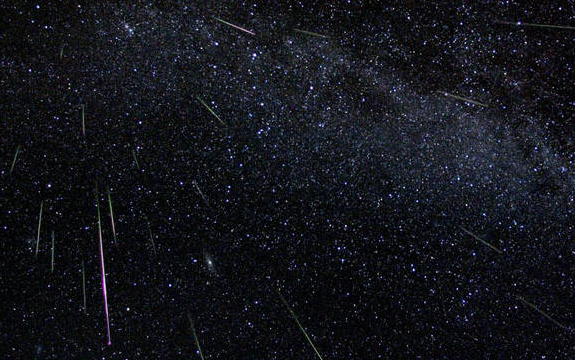Last (best!) Meteor Shower of 2015

In Summary
- The Geminids meteor shower peaks on 14 December
- Best of the year as there is little light from the Moon to outshine the shooting stars
- Ideal viewing times for the Northern Hemisphere is after sunset
Geminids meteor shower peaks on 14 December but will have some shooting stars visible a day either side. At its peak there can be as many as 120 shooting stars per hour, if observed far from light pollution.
Best viewing times for those in the Northern Hemisphere are after sunset, while in the Southern Hemisphere it’s best to wait until after midnight, although some meteors will be visible at any time of the night. The Geminids can come from any direction but will mostly appear to radiate from the Gemini constellation (the Twins) with the ‘radiant’ centered on the bright star Castor. This region of the sky will first be visible from locations given below in local times:
Australia
Brisbane (QLD) starts at 10.05pm
Sydney (NSW) starts at 10.35pm
Perth (WA) starts at 10.50pm
Melbourne (Vic) starts at 11.15pm
Darwin (NT) starts at 10.20pm
Canberra (ACT) starts at 10.50pm
Adelaide (SA) starts at 11.00pm
Hobart (Tas) starts at 11.30pm
International
Japan (Tokyo) starts at 6pm (still twilight, best to wait until at least 6.30pm)
China (Beijing) starts at 6.10pm (still twilight so best to wait until at least 6.30pm)
SE Asia (Jakarta) starts at 8.10pm
Australia will appear low on the horizon in a North-East direction when rising and will progressively move North and West as the night wears on.
Swinburne University of Technology astronomer Dr Alan Duffy says that this will be the best meteor shower of the year as there is little light from the Moon to outshine the shooting stars and there are some tips for observing.
'The meteor shower will appear to mostly originate from the radiant near the Gemini constellation so make sure to look to the horizon in the North East after sunset. Your eyes take at least 20 minutes to become dark adapted so be patient and the later you begin observing the better as the peak will be the early morning hours of Tuesday 15 December.
'Ideally you don’t want to have a city skyline between you and the Northern horizon but if you do then look away from those lights to any dark sky and some meteors that streak across the entire night sky will then be visible to you.
'Meteor Showers are caused by the Earth passing through dust grains and small pebbles from the tails of comets that burn up in our atmosphere as shooting stars. The Geminids are unusual as they are actually a debris tail from an asteroid.
'The asteroid 3200 Phaethon has an unusual orbit that brings it less than half Mercury’s distance from the Sun and it’s this intense heating after the frozen depths of space that causes the asteroid to expand and crack leaving behind a debris trail as it moves away from the Sun which is what the Earth runs into,' Dr Duffy says.
'Next time you see a shooting star just imagine that this is debris left over from the messy business of planet formation and has drifted for 4.5 billion years until it finally was caught by the Earth’s gravity, burning up in the atmosphere at tens of thousands of kilometers per hour.'
Check the meteor shower prediction at your location.

